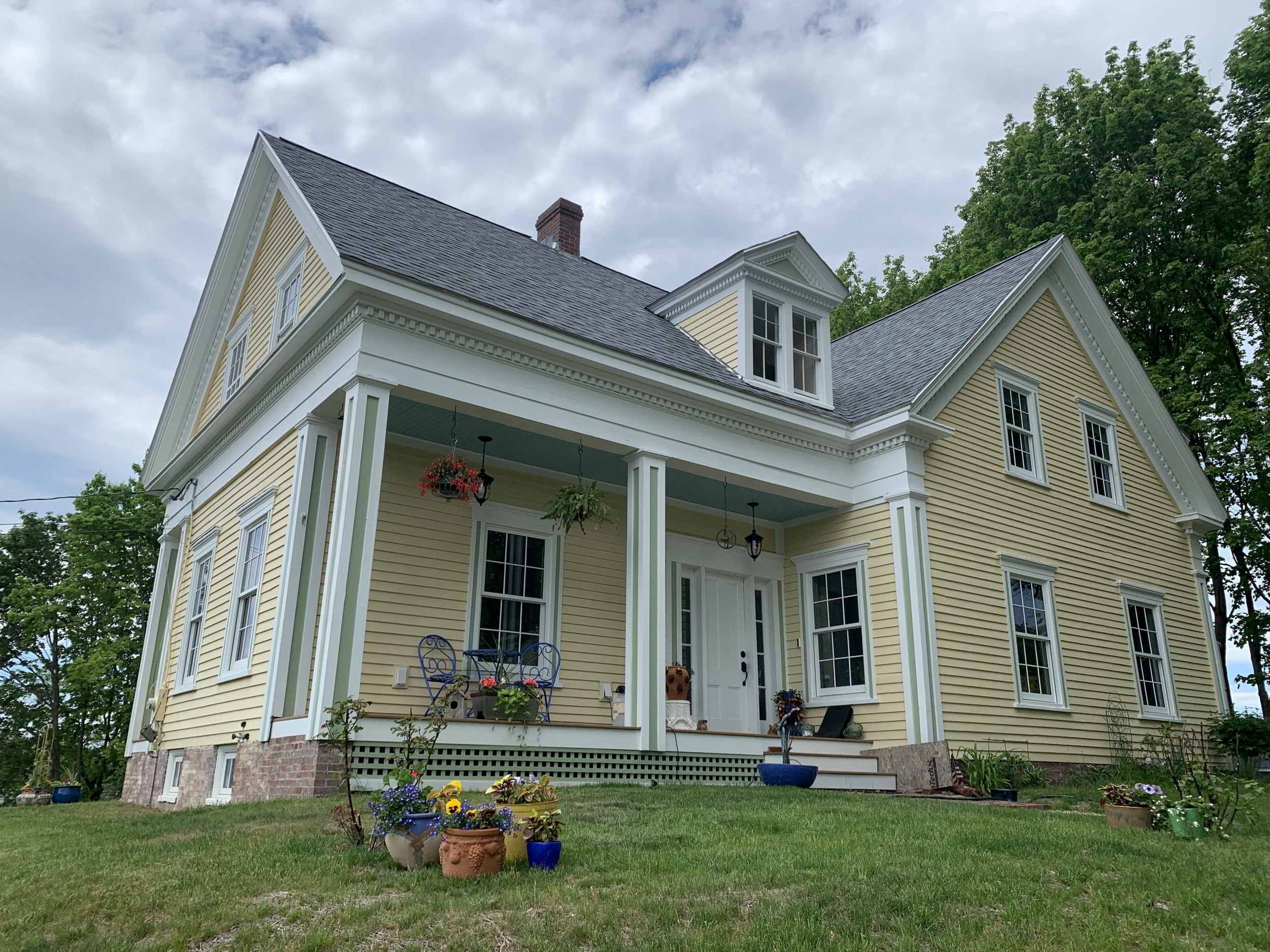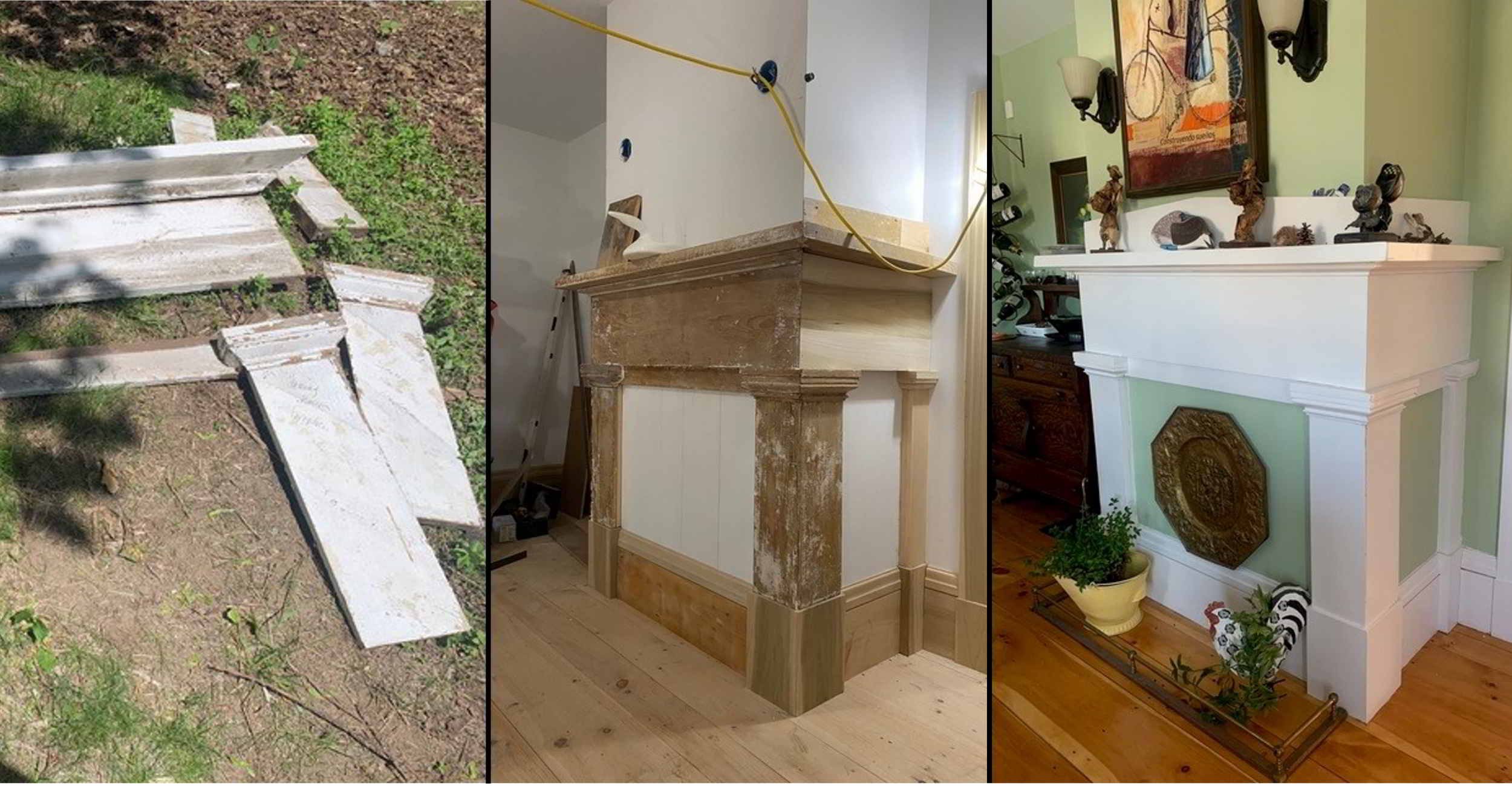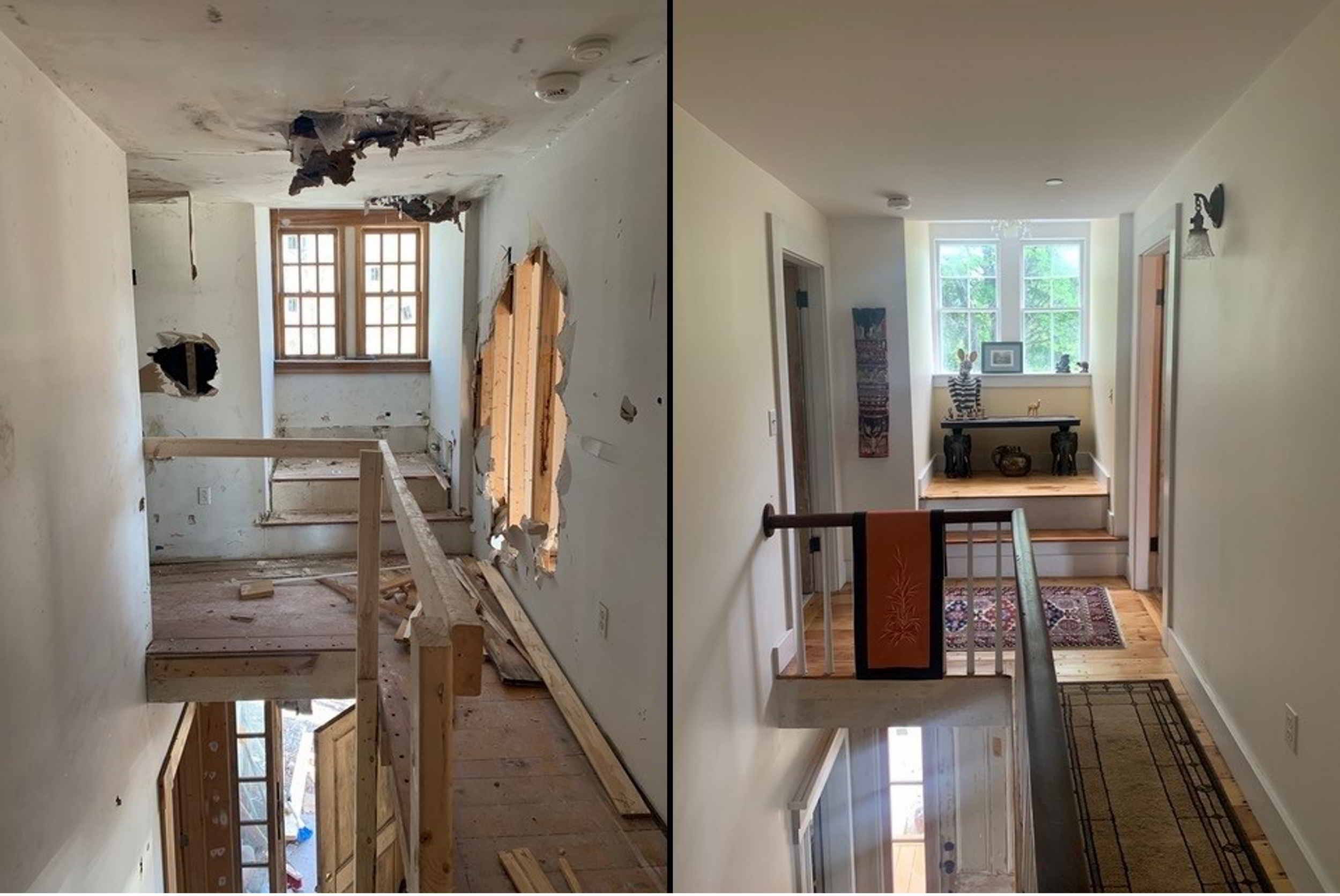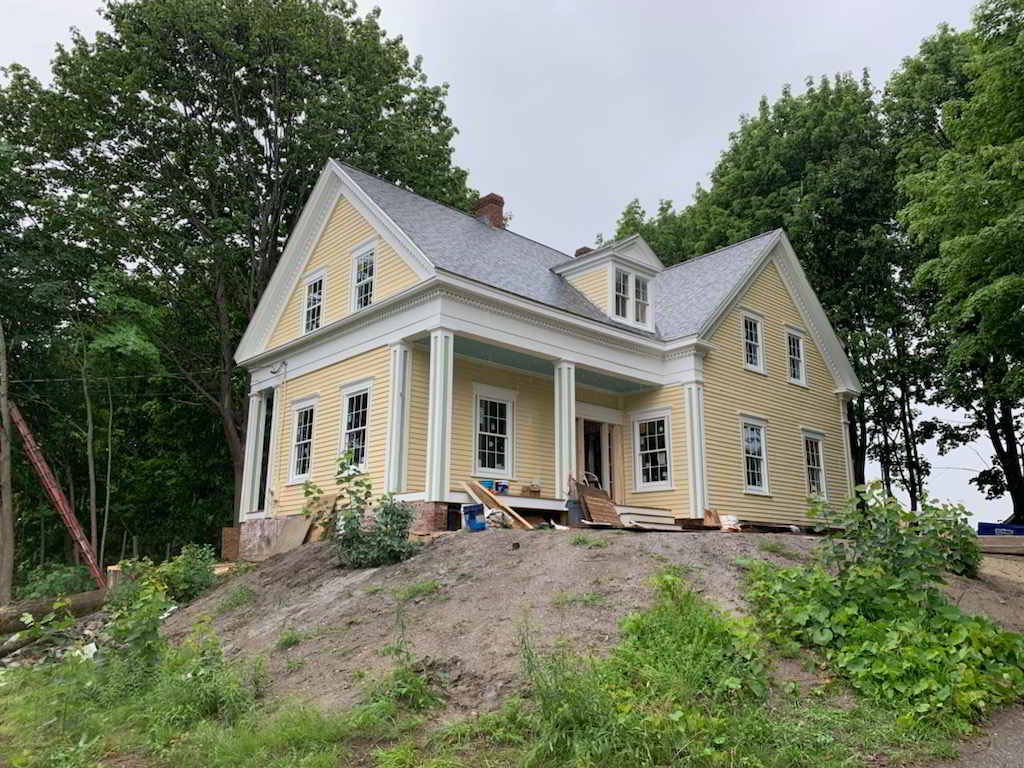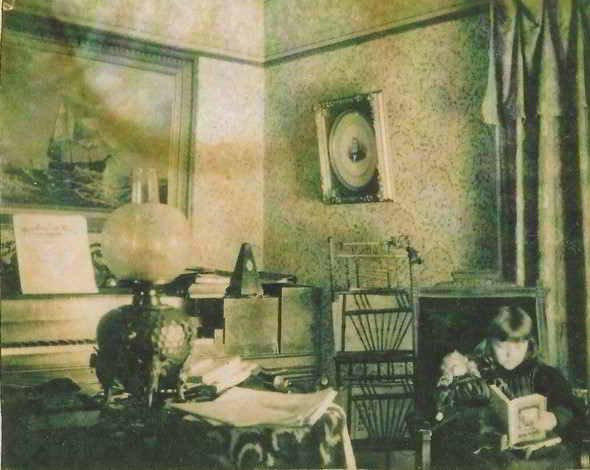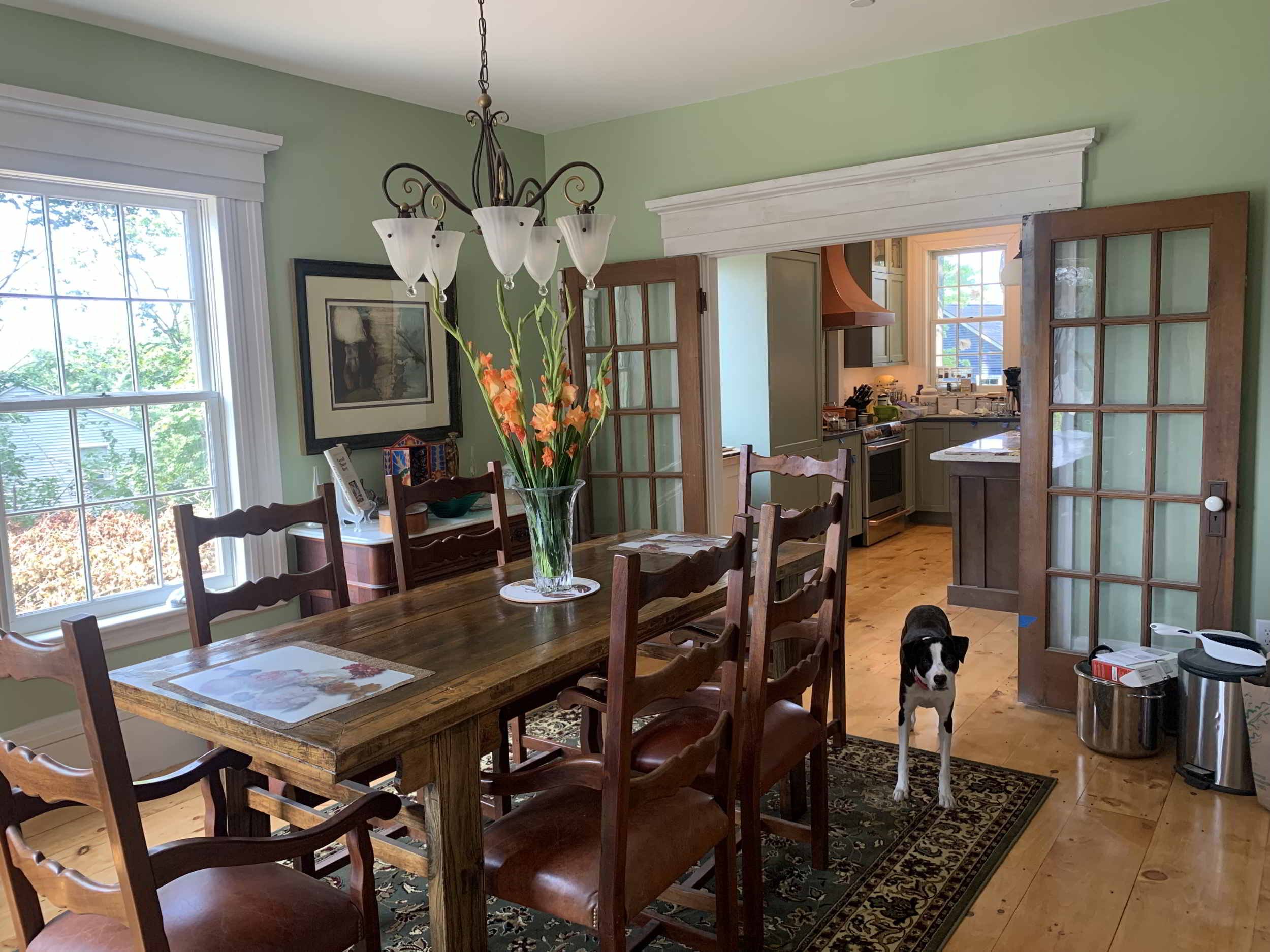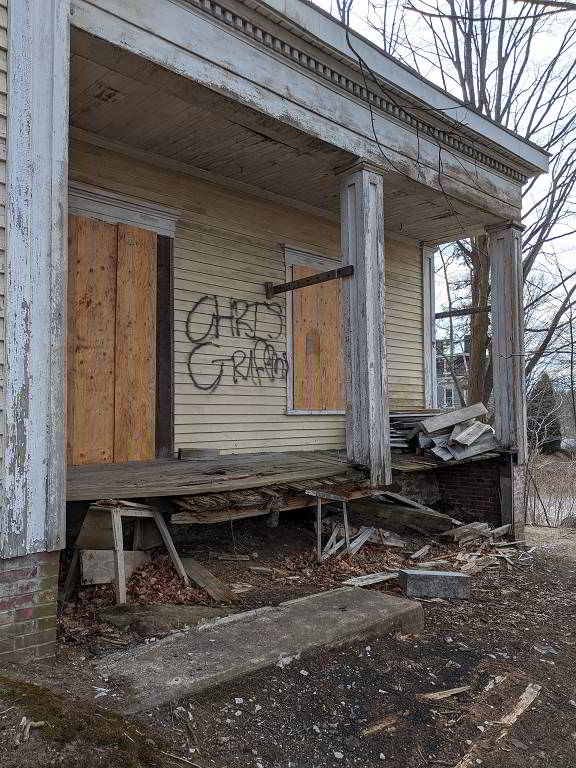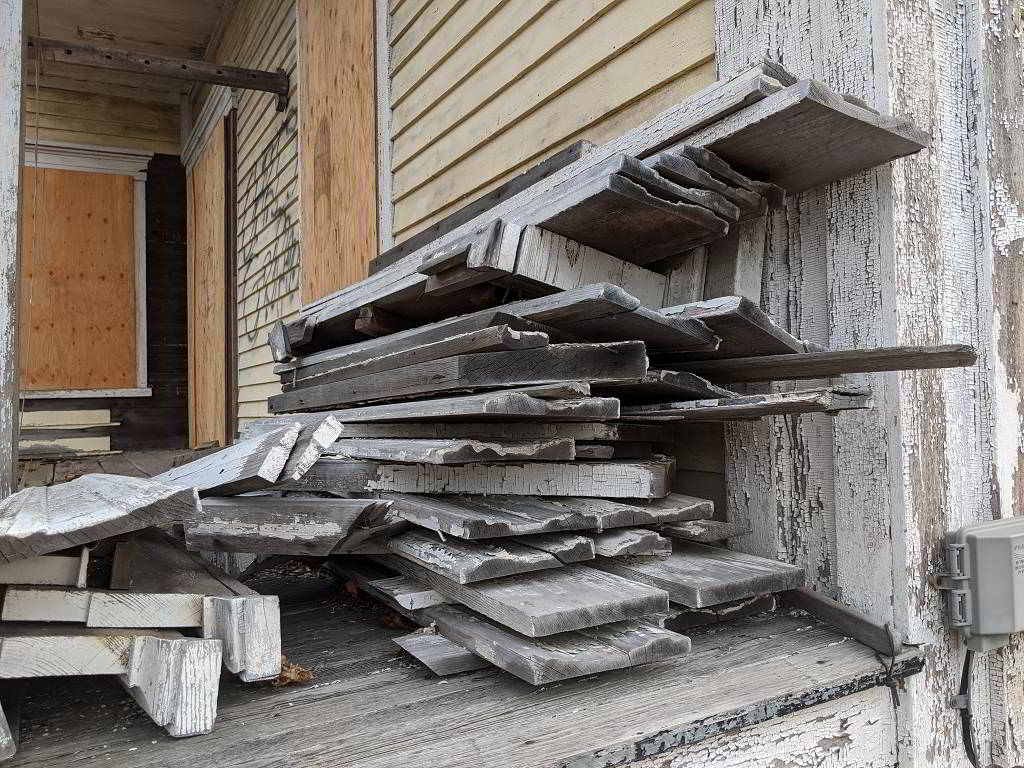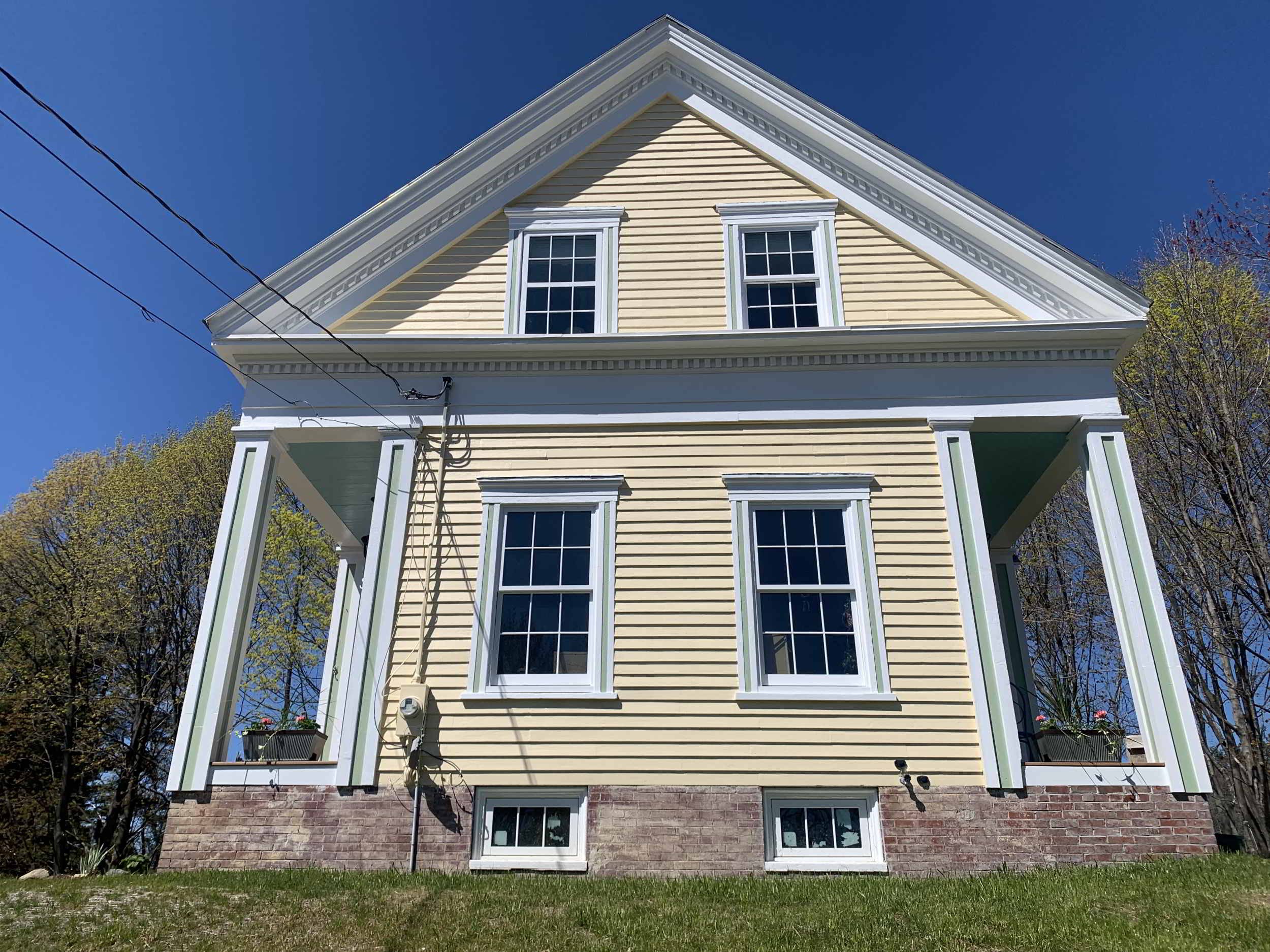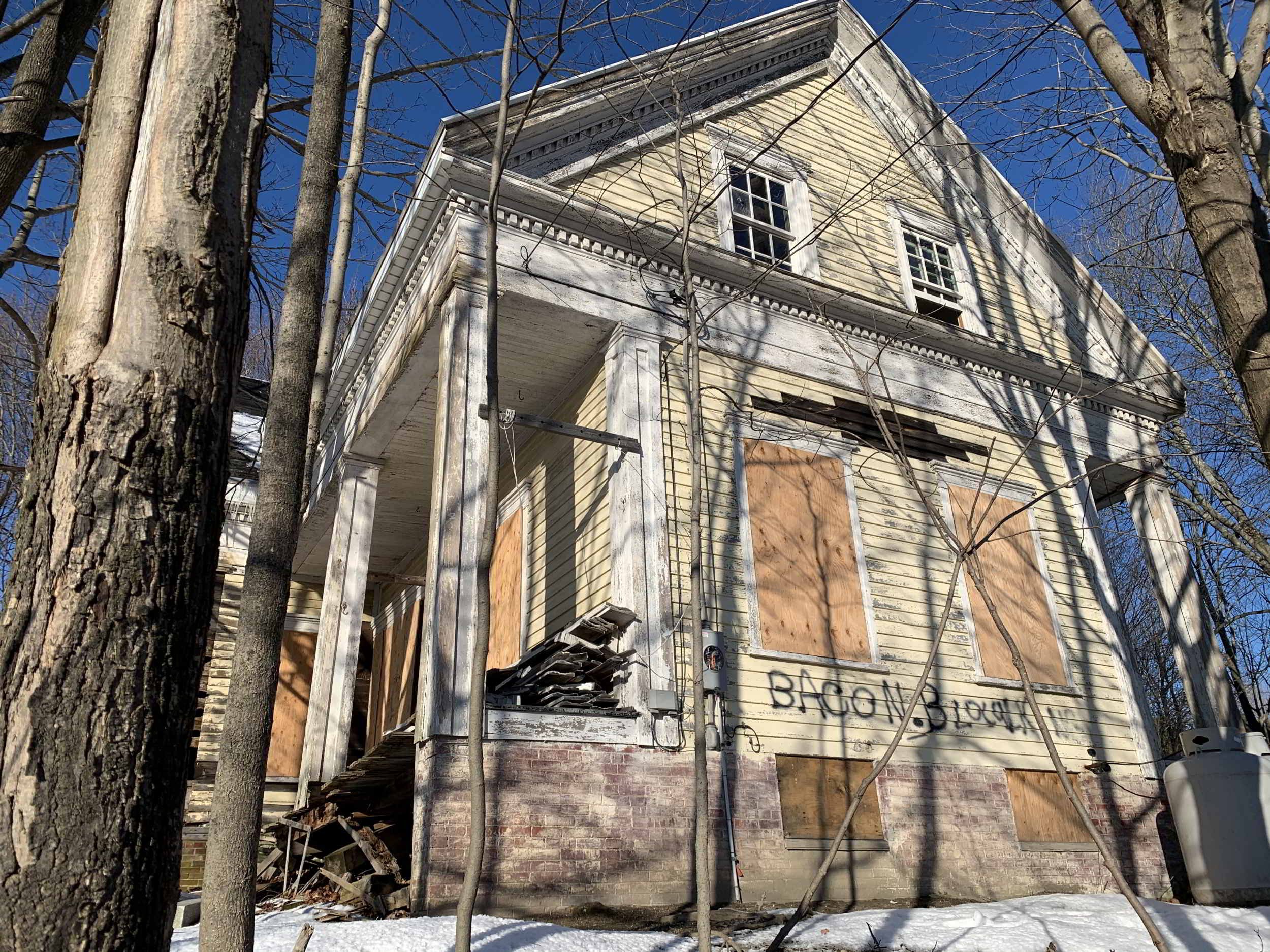Until very recently, this old farmhouse along Capisic Street was locally referred to as “The Haunted House.” To Vana Carmona, who grew up in Portland and remembered the house from her childhood, it was much more. When the City of Portland acquired the property and marketed it as a teardown in 2019, Vana jumped on the opportunity. To her it was simple, she had to “save it from destruction.”
The c. 1848 farmhouse is an unusual temple-form Greek Revival House, distinguished by a front-gabled roof with a fully enclosed pediment and wide entablature. The projecting center section of the building is flanked by inset porches supported by pillars. The farmhouse is a relic of a once rural district on the outskirts of Portland, made more apparent by a handful of other distinctly early 19th century farmhouses nearby. The area was once part of Westbrook, then later a town called Deering. The City of Portland annexed the area at the turn of the century.
Years of vacancy and neglect plagued the house – raccoons took up residence, trespassers vandalized the interior, and the elements hastened deterioration of the structure. The property’s original barn and rear ell addition had been demolished years ago, with only trace evidence and historic photographs informing Vana what they looked like. The roof leaked. While the exterior retained much of its original trim and clapboard siding, most of the original interior features had been removed by the previous owner. Fortunately, Vana uncovered a collection of original doors, mantles, and a few windows with accompanying hardware in a back room. These elements were salvaged, repaired, and later reintroduced in the house. Neighbors helped clear the site of trees and vegetation that had overtaken the site.
Architect, Margaret Innes, and contractor, Matt Alcorn, worked diligently with Vana to restore the original layout of the house. In a stroke of luck, Vana was able to get in contact with relatives of a previous owner, Marguerite Emerson, who offered stories and photos of the property. In a 1954 letter, Marguerite outlined a personal history of the house – recalling connections between the main house and ell additions, and when the house received its first plumbed toilet in 1946.
David Barker, the neighborhood historian, also shared useful research showing that the house was the fifth oldest remaining in the area. It switched hands many times through the nineteenth century, most notably to Samuel B. Washburn of Livermore. Washburn quickly sold the property to James and Caroline Emerson, whose family would be the focus of Vana’s intrigue. Their second daughter, Marguerite was born in the house in 1887 and while her siblings would grow up and leave Maine, she stayed. Marguerite was a musician and poet, having published two volumes of her works including a poem entitled, “The Old Home.” She cared for her aging mother until her death, working a variety of jobs throughout Portland. During World War II, Marguerite offered her land for victory gardens, which resulted in 22 plots on site. She remained in the house until her death in 1963. Vana has since named the house in her honor.
In September 2021, with the recommendation of the Historic Review Board, the Portland City Council designated the house a local Landmark, protecting the house along with its many histories and the hard work of Vana and her family, friends, neighbors, and project team.

